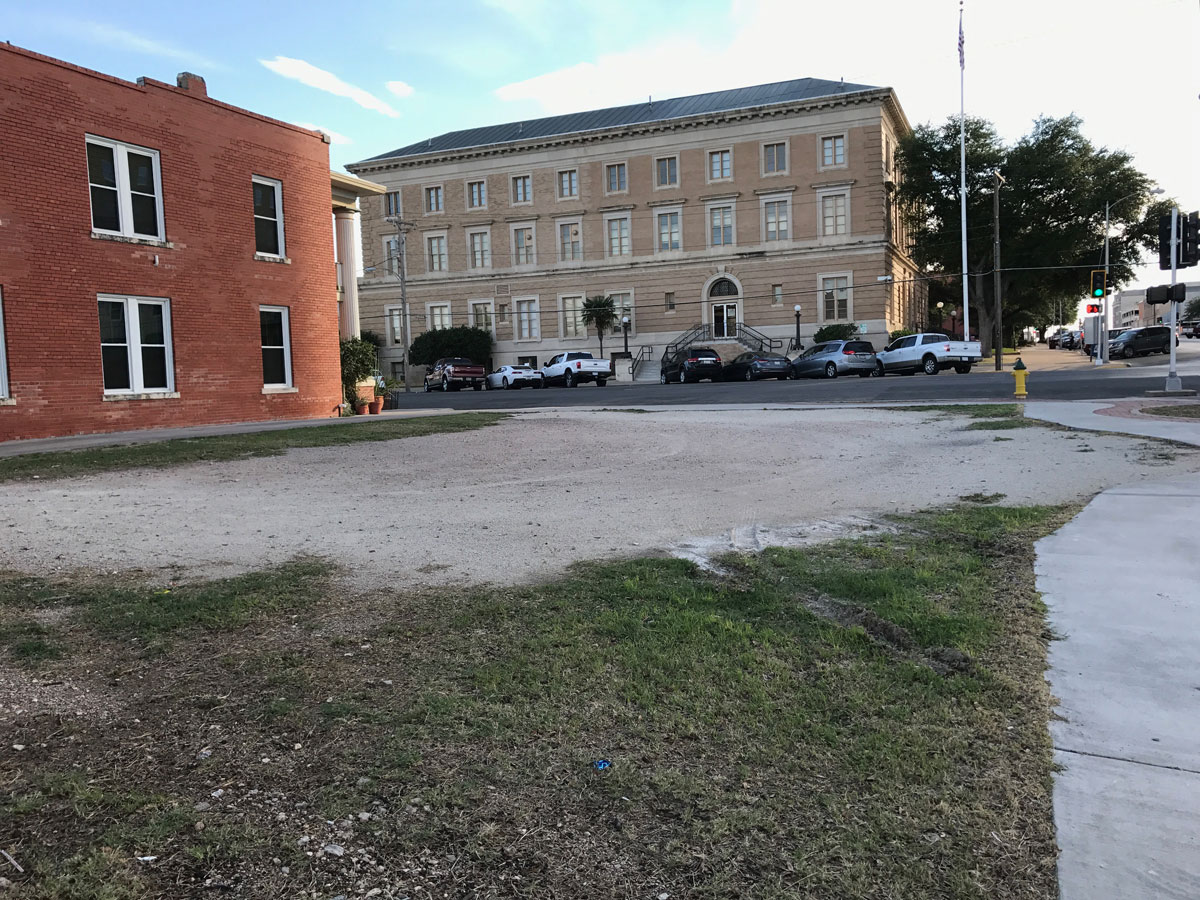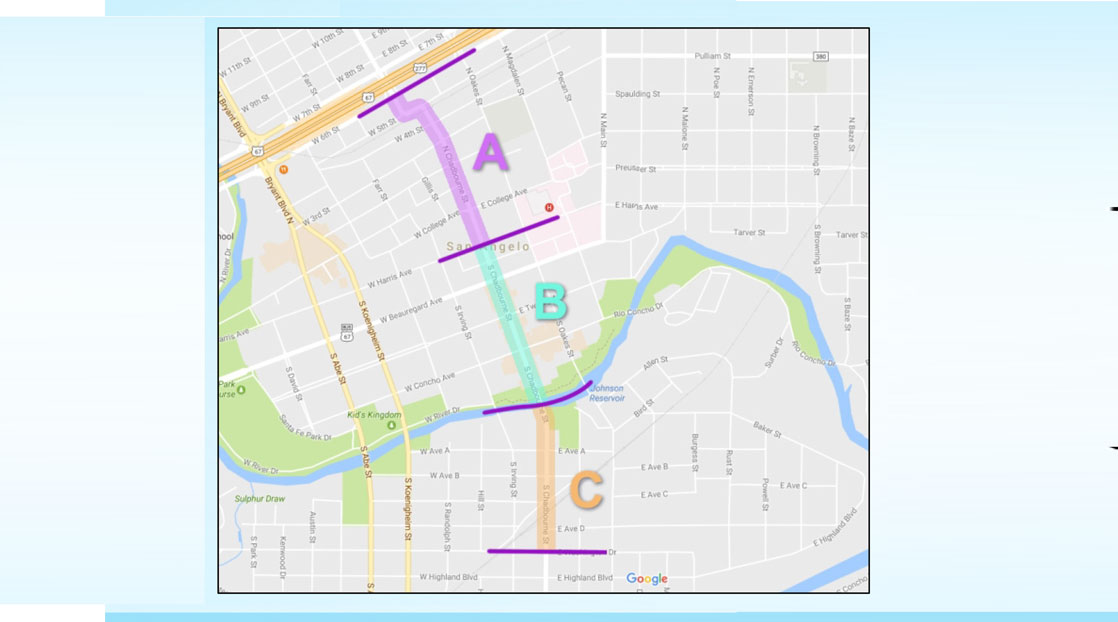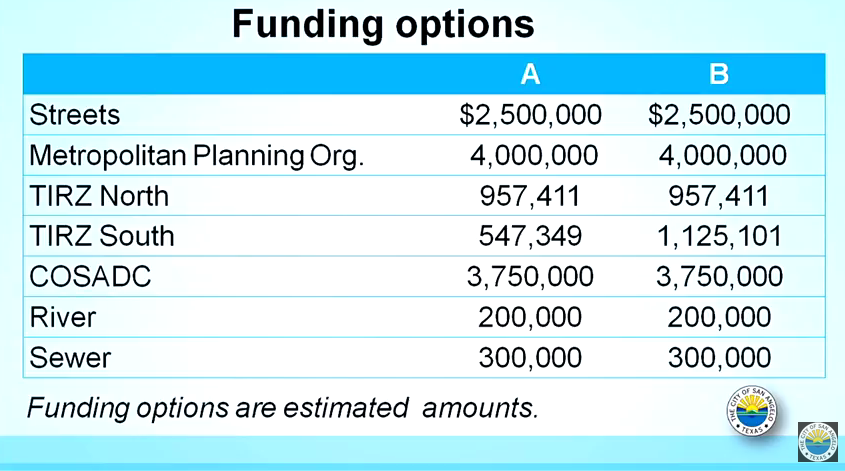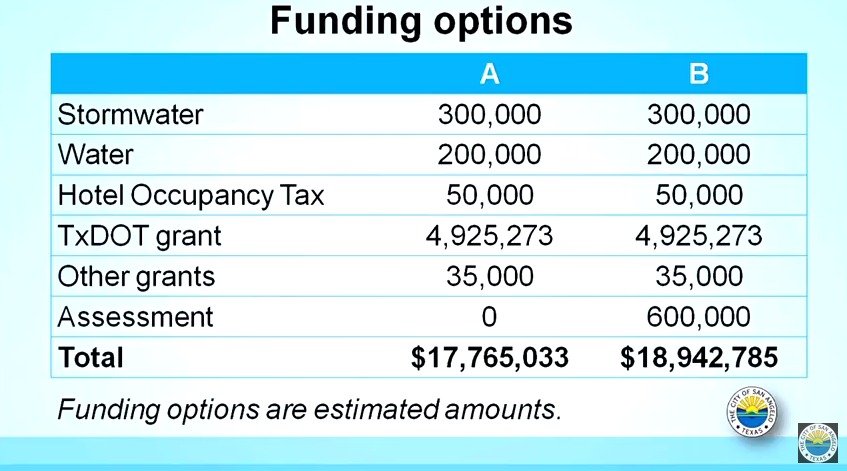SAN ANGELO, TX — Titans of downtown clashed over their respective visions of what downtown development should look like in a remarkable display at Tuesday’s city council meeting. It was remarkable only if you knew what you were witnessing.
At issue was grant money being doled out from a small pot of money in the southern Tax Increment Reinvestment, or TIRZ (pronounced to sound like ”tears”). The players were the new mayor, Brenda Gunter, and her fellow downtown development colleague and advocate for downtown Lee Pfluger.
Both share a common goal of improvement and revitalization of downtown San Angelo. The methods to do that and, in this episode, the size of their visions separate them.
Brenda Gunter and her late husband Ken dedicated their fortune to building viable commercial enterprises downtown. Ken Gunter was the original preservationist for San Angelo's downtown. What is known as “Block One” of E. Concho Ave., home of tourist destinations such as Gunter’s Miss Hattie’s restaurant and the Eggemeyer’s General Store, are mainly the result of investments made by the Gunters over the past 40 years out of a passion to restore what once was.
At the same time, Pfluger invested in making the circa-1928 Cactus Hotel grand again. But Pfluger’s approach was to help non-profit entities to contribute to enhance his properties as cash flow allowed. His for-profit Historic City Center Project, Inc. has slowly brought the Cactus back over 30 years. See “San Angelo’s Heartbreak Hotel” for more.
At the same time Pfluger says he is all for private enterprise. He said his primary focus is investment in commercial projects in larger cities such as Dallas, but if San Angelo will support it, he would rather see all of downtown revitalized as private enterprise, not with non-profit entities or government. Pfluger was the financier behind The Angry Cactus restaurant, a private development project that benefited from TIRZ subsidies.
Gunter views all development projects, whether non-profit or commercial, similarly. “Non-profits need to generate cash flow, too,” she said. Gunter wants TIRZ money to be directed to the larger picture. That is, not just to parks that only impact a small portion or downtown, but to replacing streetlights and improving public infrastructure along long stretches of roadways, for example.
TIRZ was the chessboard for the two local titans to ask the larger question of how should the community proceed bringing downtown back to life and, in passing, the blighted areas north of town.
How the TIRZ was established in San Angelo means downtown developers have a very small pot of money to work with.
In San Angelo, the TIRZ is divided into two regions: the Southern TIRZ for the central downtown area below 3RD St and the Northern TIRZ, from 3rd St. stretching as far north as 33rd St..
Property tax collected within either TIRZ area does not flow into the school district, city, or county general funds. Instead, it flows directly into special TIRZ funds that are used to “preserve the near- and long-term integrity of the economic and social investment” of the 1,319 acres of both TIRZ zones, the City of San Angelo states on its website. This is accomplished by giving TIRZ grants of money primarily to private investors and some public sector projects. (See *pdf map for the areas)
When TIRZ was established in 2006, just before the Walmart on 29th St. was to be built, and with it, its enhanced property tax revenue, city leaders set forth to create the TIRZ to capture the Walmart tax money to rebuild downtown. Former Mayor Dwain Morrison, who was a councilman at the time, was part of a group of councilmen representing the interests of north San Angelo who pushed to establish a division of north and south TIRZ money back then. The impact today is that northern San Angelo, not the central downtown area, reaps the majority of the money from TIRZ.
Money from that Walmart bonanza cannot be spent on projects south of 3rd St., starving the southern TIRZ of grant money where downtown is beginning to show signs of life.
Watch: Council presentation of the TIRZ at the July 18, 2017 San Angelo City Council meeting.
This year, the southern TIRZ has just $239,566 available in grant money to private and public development. Meanwhile, the northern TIRZ has $1.1 million available in grant money. The southern TIRZ had more applicants than available money; the northern TIRZ had few applicants. City staff has recommended only $108,480 in northern TIRZ grants this year. “If you’re listening out there, we’re strongly encouraging folks from the north area to apply,” said Jon James, City Planning Director.
According to Pfluger, who is currently the Vice Chairman of the TIRZ Board representing Tom Green County, at a meeting last year, when private citizen Brenda Gunter was sitting on the same board, the body decided to dedicate a minimum of 25 percent of TIRZ grants to public projects. This includes items like new streetlights and parks. But it also can be directed at public parks.
That informal designation of where grant money will be issued for 2017 proved a valuable tool for Pfluger to use in getting the city staff and TIRZ Board to recommend spending $37,000 on his pet public project, Heritage Park, also referred to as a pocket park, to be built in a vacant lot at the corner of S. Oakes and E. Twohig, catty-corner across the street from Pfluger’s Cactus Hotel.
Pfluger’s vision for Heritage Park is grand. “It’s going to be a game-changer on the scale of Celebration Bridge,” he said, as he showed the park’s architectural drawings. Celebration Bridge spans across the Concho River behind the San Angelo Museum of Fine Arts and today is a signature landmark of the city. He believes Heritage Park will have the same impact.
The planned $870,000 Heritage Park project includes large metal leaves, three total, with a price tag of over $100,000 each. A flat screen multimedia display will be located in the center to give visitors a self-guided tour of downtown. The park will also feature a working water harvesting demonstration.
“It is more than a park. It’s actually a multi-faceted, educational concept for our community,” Pfluger argued at Tuesday’s council meeting.
“That’s not what J. Willis Johnson had in mind when he donated that land,” Gunter countered. Gunter said Johnson’s vision was to clean up the lot with landscaping and to display a statue of a cowboy and a horse, that Johnson will donate, to commemorate the western heritage of San Angelo much like Johnson’s grandfather exemplified.
Pfluger’s project, a much grander vision than Gunter’s interpretation of Willis’, incorporates an endowment to pay for park maintenance. San Angelo Area Foundation will build and operate the park. Much of the money, $600,000 of the project’s projected cost of $870,000, has already been raised.

Above: Looking west from the back of the lot where Heritage Park will be built. (LIVE! Photo/Joe Hyde)
Regardless, the number of private projects needing funding in the cash-strapped southern TIRZ meant several of those private investment projects would not be funded in order to pay for a small part of Pfluger’s pocket park, or as Pfluger maintains, to satisfy the TIRZ Board’s informal goal of dedicating 25 percent of the TIRZ grant money to public projects.
Pfluger won round one at the TIRZ Board meeting May 23. The board approved $37,000 to be spent on the pocket park and denied or reduced the requested amount of several private development projects. Pfluger was armed with his research. He presented a spreadsheet and his own scoring of the various grant applications. Pfluger urged, and the board agreed, to look at how much of the requested money was dedicated to each applicant’s building’s façade, where façade rehabilitation was a requirement of the grants.
Denying or reducing grants for private investment didn’t jive with Gunter’s vision that she often stated during her campaign, to be an advocate of private developers to grow San Angelo’s economy. But she was stymied by the informal 25 percent public funding requirement set by the TIRZ Board she formerly sat on.

Above: Architectural drawings of Heritage Park. (LIVE! Photo/Joe Hyde)
Controlling the San Angelo City Council agenda, Gunter sat on the TIRZ Board recommendation, and Pfluger’s $37,000 grant for the pocket park, for almost two months until Tuesday. No money could be granted without council’s stamp of approval. Pfluger wondered what Gunter had up her sleeve. “A good journalist would go and ask questions,” he said in mid-June.
On Tuesday, Gunter made her move. She turned the question of where to spend the TIRZ money into a much larger one than just a non-profit pocket park versus dedicating scarce southern TIRZ funds to private investors. Gunter’s argument became do we invest in a pocket park on one downtown lot or do we invest in entire streetscapes?
Her vehicle was the Chadbourne Street Corridor Project, approved in mid-May by a unanimous vote by her council. The $20 million proposed project would be subsidized by a $6.1 million grant from the Texas Department of Transportation. The City has to compete for, and win, the grant before the Corridor project can go forward.

Above: Chadbourne Street Corridor Project
After the TxDOT grant, where will remainder, about $14 million, come from?
Since some of the three-phase Corridor project is located within the northern TIRZ, the City is planning to use TIRZ money from north and south zones. Just under $1 million will come from the northern TIRZ and $550,000 from the southern TIRZ over multiple years. Added to that is $2.5 million already allocated to rebuild the Chadbourne roadway, $4 million from the Metropolitan Planning Organization, and $3.8 million from half-cent sales tax revenue flowing through the City of San Angelo Development Corporation. The City is assuming a $4.9 million TxDOT contribution to be conservative (see chart below).


Above: Funding options for City's Chadbourne Street Corridor Project (Photo Courtesy of COSA)
Gunter maintained that the Corridor project is a perfect storm of opportunity. “We happen to have resources available from a variety of sources to get this done,” she said. “It will benefit all of San Angelo but we have to act now when the funding pieces are in place.”
“When you look down Chadbourne in the daytime, you can tell its not truly revitalized yet,” she said. One major problem is the height of the existing streetlights. They were installed way back when U.S. 87 went down Chadbourne and they are too high, she said. The Corridor project will build new sidewalks and, in Gunter’s view, make the historic thoroughfare truly revitalized and spur more private investment in the old part of town.
Tuesday, Gunter argued that if 25 percent of TIRZ money goes to pocket parks, less funding would be available to get the Corridor project underway. Gunter’s argument was do we invest in pocket parks or a major $20 million corridor infrastructure improvement project?
Jim Turner and Del Velasquez argued during the public comments period that the purpose of TIRZ was to enhance the value of all taxable property within the zone, where increased valuations re-contribute more and more property tax revenue into TIRZ to build more private development projects. Non-profit property like the pocket park is exempt from property tax, Velasquez reminded the council.
Gunter’s Corridor won. Council voted to approve all TIRZ grants allocated to private entities and deny funding to the only public project presented Tuesday, Pfluger’s pocket park.
Newly seated Councilwoman Billie DeWitt was the lone dissenter. Her stated reason was she appreciated the educational benefits of the park and thought this was an opportunity to fund the sole and only TIRZ project that was not on Chadbourne.
“I don’t think $37,000 is too much to invest in our kids,” DeWitt said.
As for the pocket park, it still will be built. The disapproved $37,000 was but a drop in the bucket of the $600,000 of the $870,000 budget already raised. “It will be $37,000 more that we have to raise. I think the park will happen. There just may be a delay,” Area Foundation Executive Director Matt Lewis said.
Gunter said she is optimistic the City will win the TxDOT grant funding for the larger Corridor project. And now, she will have both TIRZ zones contributing money towards that goal.
Subscribe to the LIVE! Daily
Required






Comments
I pay over 10% of my income for two thousand gallons of smelly tap water . I pay $3,600.00 property tax on a house that cost me $55K. This article describes the typical money game played by the elite of this community always and forever. They are constantly busy selling some city asset like the landfill or buying a ranch for the taxpayers to maintain. Anything to keep a perpetual shell game going with the tax money so no one can begin to figure out what is happening to the millions of dollars churning back and forth.
Many of us just want basic services at an affordable tax rate. I guess clean water that doesn't smell like a muddy stock tank is not as glamorous as some pet downtown project that many of us will never use.
$.02
- Log in or register to post comments
PermalinkPost a comment to this article here: